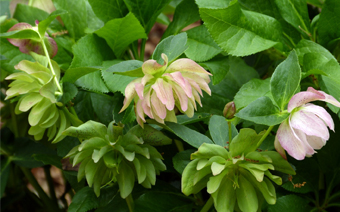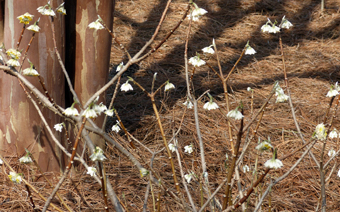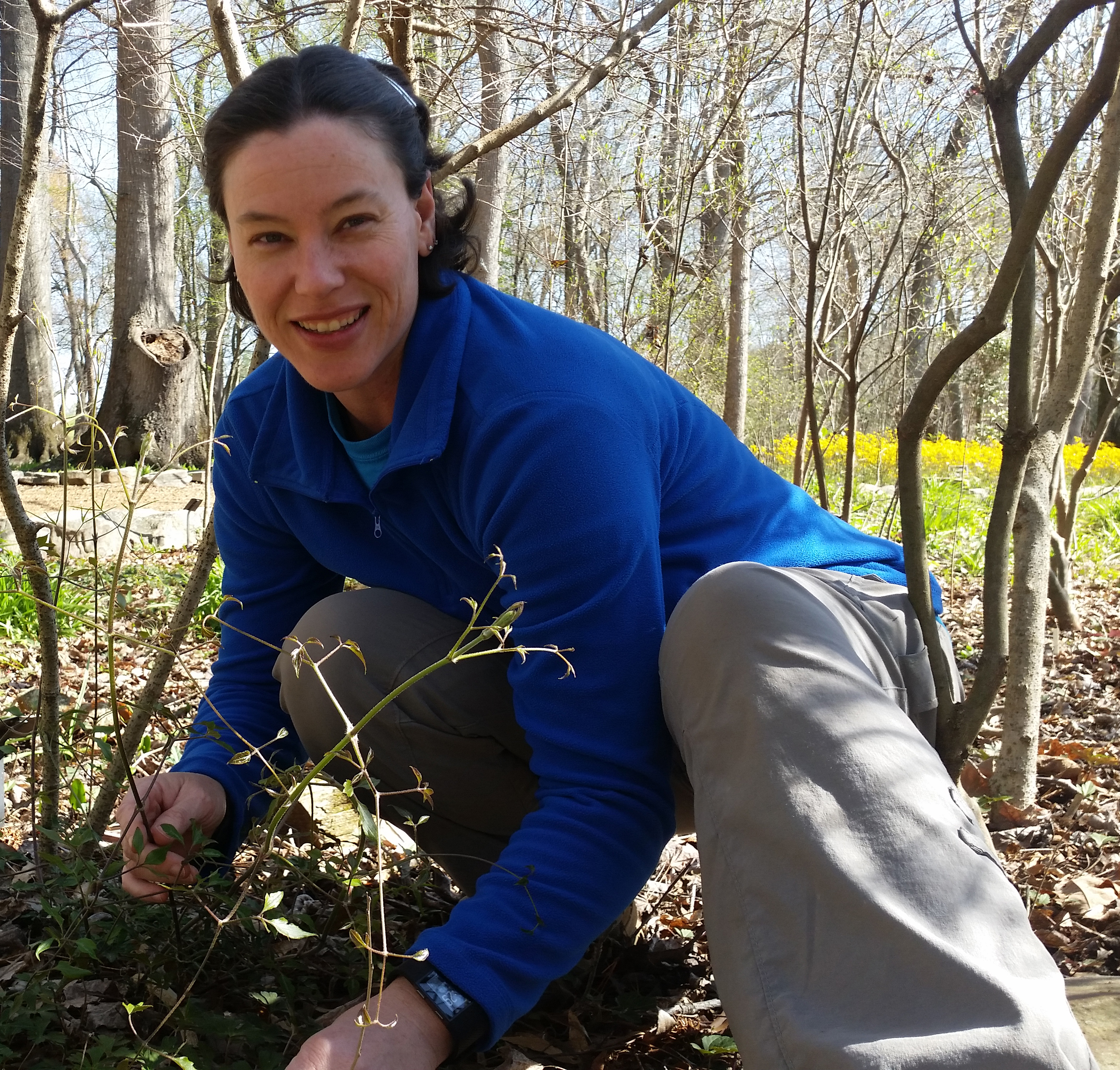 Edgeworthia chrysantha, Paperbush (Located west of the Celebration Garden)
Edgeworthia chrysantha, Paperbush (Located west of the Celebration Garden)
Edgeworthia chrysantha, commonly called Paperbush or Edgeworthia, is a deciduous shrub that typically grows to 4-6 feet tall and wide. This member of the Thymelaeaceae family, a cosmopolitan family composed of 50 genera, is closely related to Winter Daphne (Daphne odora). Edgeworthia is native to forested regions in the Himalayas and China. In southeastern North America, it is most prized for its silvery winter flower buds and ornamentally attractive brown branches. Clusters of tiny tubular, yellow flowers begin to form buds in late summer, overwinter on the bare stems, and typically bloom in February before leaf out. The flowers of this long bloomer can last into April! The inner bark has historically been used to make high-quality paper, giving it the common name of Paperbush. The genus name honors the Irish-born botanist, Michael Pakenham Edgeworth (1812-1881), and his half-sister Maria Edgeworth. The specific epithet refers to its yellow flowers.
 Helleborus foetidus, Bear claw Hellebore (Located on the upper Dogwood Trail)
Helleborus foetidus, Bear claw Hellebore (Located on the upper Dogwood Trail)
Helleborus foetidus, also known as bear claw hellebore or stinking hellebore, is in the buttercup family (Ranunculaceae). It is native to the mountainous regions of Central and Southern Europe, Greece and Asia Minor, where it often occurs naturally on chalk or limestone soils. This herbaceous perennial has handsome dissected evergreen foliage up to 18 inches and large numbers of green, bell-shaped flowers in late winter. It performs best in woodland conditions with deep well-drained soil and part to full shade. Bear claw hellebore is drought-tolerant, once established, and deer resistant due to the presence of glycosides in all tissues, making every part of the plant poisonous if ingested. The genus name comes from the Greek words bora meaning food and helein meaning injures/destroys in reference to the plant’s toxicity to humans if ingested.
 Helleborus orientalis ‘Heronswood Double Pink’, Lenten Rose (Located on the Dogwood Trail)
Helleborus orientalis ‘Heronswood Double Pink’, Lenten Rose (Located on the Dogwood Trail)
Helleborus orientalis is an herbaceous evergreen perennial in the Buttercup family (Ranunculaceae) and is native to Turkey, Caucasus, and parts of Eastern Europe. This plant has one of the longest bloom periods of any perennial grown in USDA zone 7 – up to 10 weeks! ‘Heronswood Double Pink’ Hellebore has an upright spreading habit to 15 inches high and 16 inches wide. It features showy nodding pink cup-shaped flowers with white overtones and pink spots held above the foliage from late winter to early spring. Its attractive evergreen compound leaves remain green in color throughout the year, but it performs best in full to partial shade and when protected from drying winter winds. This is a relatively low maintenance plant that is resistant to deer browse and drought tolerant once established. Leaves, stems, and roots are poisonous if ingested.
 Hamamelis × intermedia ‘Diane’, Witch hazel ‘Diane’ (Located on the Bush Azalea Trail)
Hamamelis × intermedia ‘Diane’, Witch hazel ‘Diane’ (Located on the Bush Azalea Trail)
Hamamelis x intermedia hybrids are crosses between Japanese witch hazel and Chinese witch hazel, H. japonica and H. mollis, respectively. They are loosely-branched deciduous shrubs that typically grow 12-20 feet tall. They are prized for their fragrant, spidery, mid-late winter flowers that bloom before leaf out. ‘Diane’ typically grows to 8-12’ tall and to 10-15’ wide and is noted for its winter-blooming, mildly fragrant, red to copper-red flowers and attractive shades of yellow, orange and red fall color. This is an excellent winter-flowering shrub for borders, woodland gardens, screening, or specimen plantings. Promptly remove root suckers rising from below a graft union. The genus name comes from the Greek words hama meaning “at the same time” and melon meaning “fruit” referring to the occurrence of both fruit and flowers at the same time and the hybrid name means intermediate in color, form or habit.

